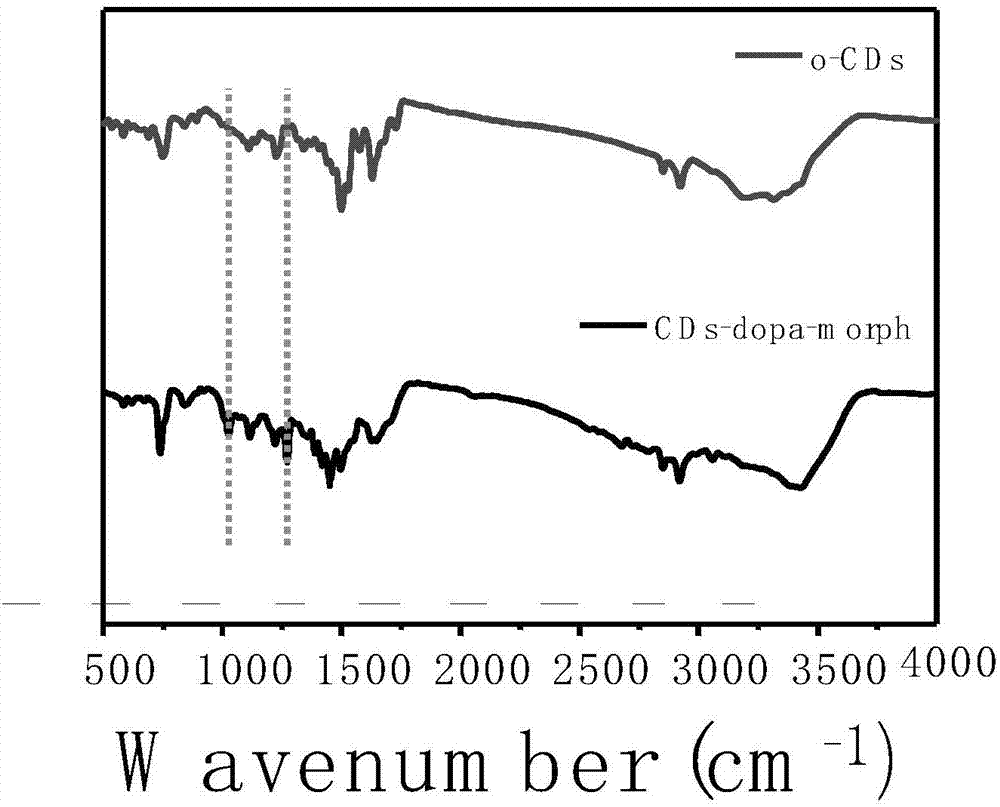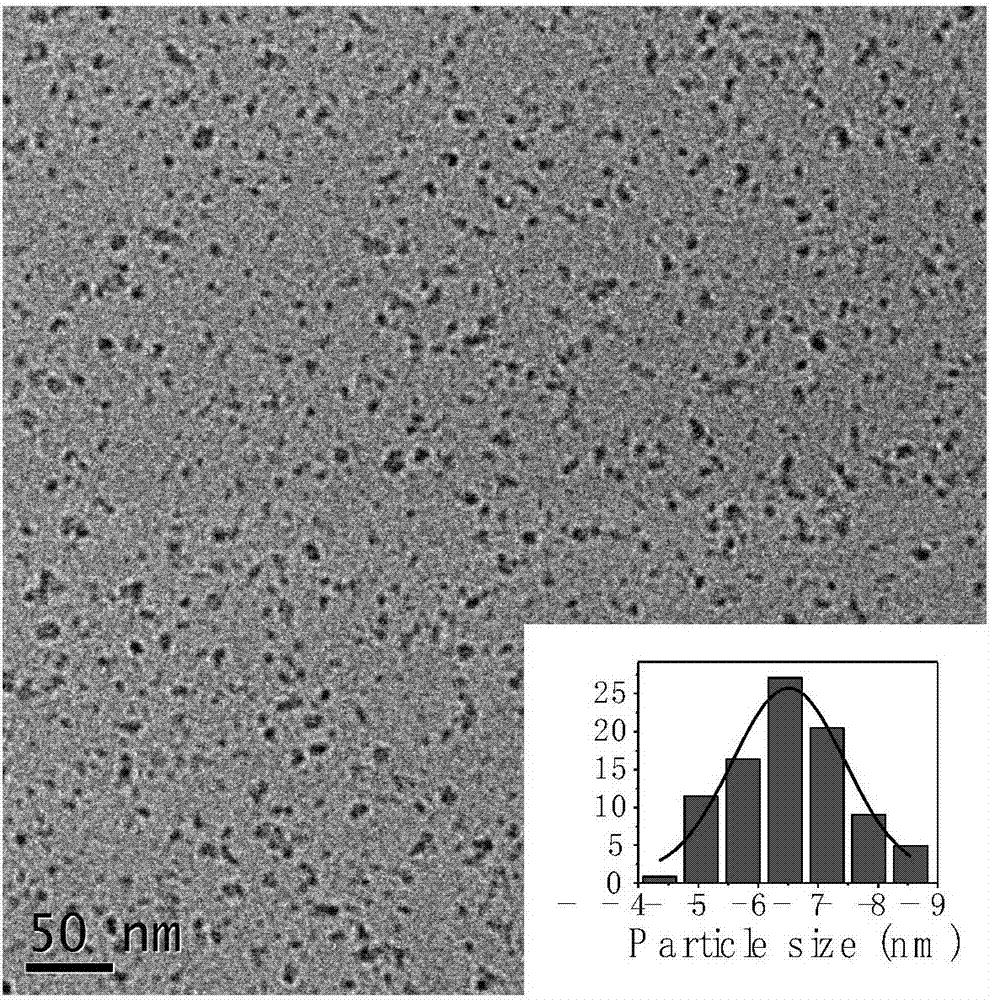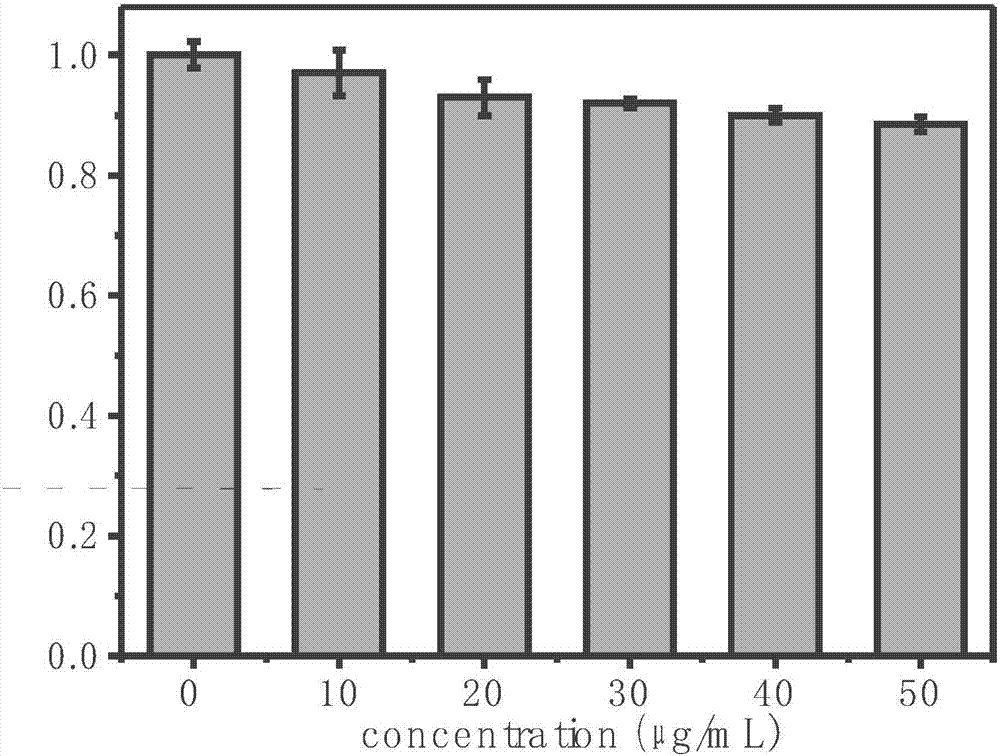Method for targeted detection of H2S in lysoome through carbon quantum dots
A technology of carbon quantum dots and lysosomes, which is applied in the field of biosensors and ion recognition, can solve the problems of high cytotoxicity and poor biocompatibility, and achieve the effects of good biocompatibility, low cytotoxicity and cheap raw materials
- Summary
- Abstract
- Description
- Claims
- Application Information
AI Technical Summary
Problems solved by technology
Method used
Image
Examples
Embodiment 1
[0032] Preparation method of carbon quantum dots C-dots
[0033] Weigh 0.9g of o-phenylenediamine, add it into 90mL of ethanol and stir until completely dissolved, then quickly transfer the above solution to a polytetrafluoroethylene-lined autoclave, then place it in an oven at 180°C for 12 hours, and cool naturally to room temperature, remove. The reacted mixed solution was concentrated under reduced pressure to obtain a black powder crude product. The crude product was subjected to silica gel column chromatography using dichloromethane and methanol at a volume ratio of 50:1 as the eluent to obtain a yellow-green product, which was finally obtained by rotary evaporation under reduced pressure and vacuum drying under reduced pressure to obtain a yellow powder as C-dots.
[0034] Preparation method of carbon quantum dot CD-dopa-morph fluorescent probe
[0035] Add 30mL of methanol and 10mL of dichloromethane into the container, and bubble with nitrogen for 2h to remove the ox...
Embodiment 2
[0036] Example 2, H 2 S selectivity experiment
[0037] The carbon quantum dot CDs-dopa-morph was added to the glycine buffer solution of pH=5.0 to prepare a solution of known concentration, and the stock solutions prepared by different interfering substances were added to it respectively, and the fluorescence intensity was tested. Interfering substances contain: K + , Fe 3+ , Zn 2+ , Mg 2+ 、Na 2 SO 3 , NaHSO 3 , NO 2 - , NO 3 - , AA, GSH all substance concentration 200μM, H 2 The concentration of S was 10 μM. It can be clearly seen from the fluorescence spectrum that only the H 2 The sample solution of S has a strong fluorescence enhancement for the probe at 575nm, showing a strong response to H 2 The efficient selectivity of S (such as Figure 5 shown), while samples containing other common ions, amino acids, etc. showed very weak fluorescence changes. Thus, it can be judged that the prepared CDs-dopa-morph fluorescent probe of the present invention is 2 S h...
Embodiment 3
[0038] Embodiment 3, the preparation of sensor solution
[0039] The carbon quantum dot CDs-dopa-morph is added to the glycine buffer solution with pH=5.0 to prepare a solution with known concentration. With the configured solution can be used for H 2 Qualitative and quantitative detection of S, such as Figure 6-Figure 8 shown. From Figure 8 Quantitative analysis data can be obtained in the present invention carbon quantum dot CDs-dopa-morph is used for H 2 Standard equation for quantitative detection of S.
[0040] Below in conjunction with example further describe the present invention to H 2 Quantitative identification detection of S.
PUM
| Property | Measurement | Unit |
|---|---|---|
| particle diameter | aaaaa | aaaaa |
Abstract
Description
Claims
Application Information
 Login to View More
Login to View More - R&D
- Intellectual Property
- Life Sciences
- Materials
- Tech Scout
- Unparalleled Data Quality
- Higher Quality Content
- 60% Fewer Hallucinations
Browse by: Latest US Patents, China's latest patents, Technical Efficacy Thesaurus, Application Domain, Technology Topic, Popular Technical Reports.
© 2025 PatSnap. All rights reserved.Legal|Privacy policy|Modern Slavery Act Transparency Statement|Sitemap|About US| Contact US: help@patsnap.com



